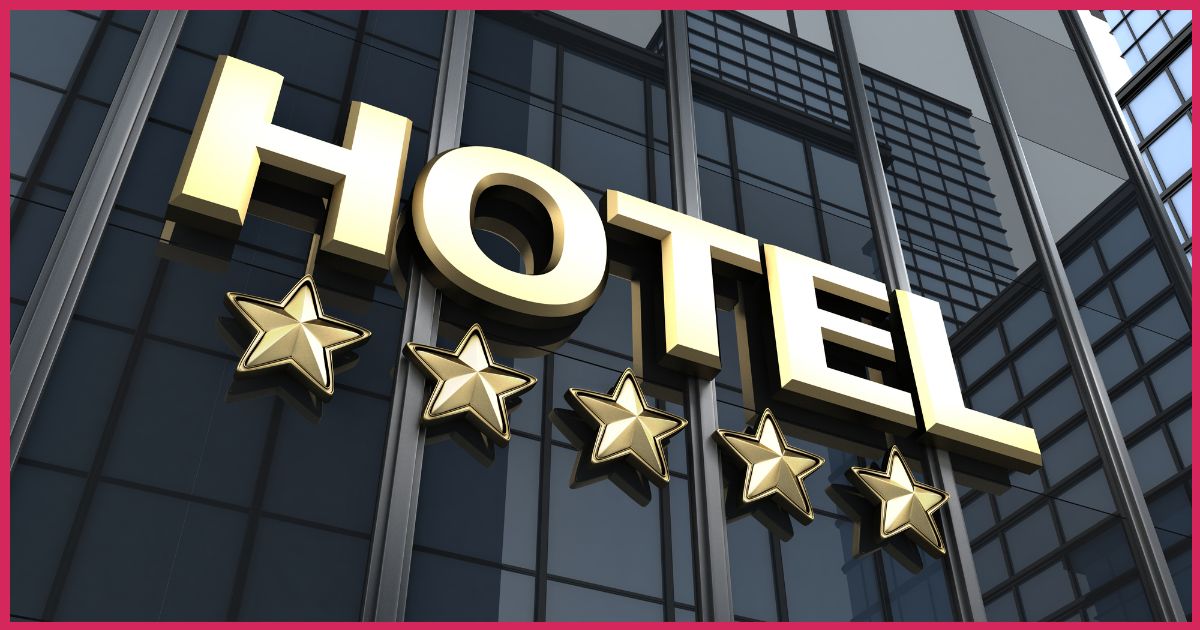What is RevPAR & How To Calculate It?
Understanding key performance metrics is fundamental in the hospitality industry. Among these, Revenue Per Available Room, or RevPAR, offers a crucial snapshot of a hotel's financial health.
This article breaks down RevPAR, explains its calculation, and explores ways to improve it. We'll also consider alternatives and address common queries related to this essential metric. Let's get started.
What Is RevPAR (Revenue Per Available Room)?

RevPAR is an acronym that stands for Revenue Per Available Room. It's one of the most important performance metrics in the hospitality industry used by hoteliers worldwide to assess their hotel's operational performance.
RevPAR is a combination of two crucial factors in the hotel business: room rates and occupancy. It provides a measure of how well a hotel is managing its room inventory and pricing strategy. By looking at the revenue generated per available room, hoteliers can get a sense of how well they are balancing room rates against occupancy to maximise income.
In essence, RevPAR is a measure of both occupancy and rate strategy effectiveness. It helps to provide a more nuanced picture of a hotel's financial health than occupancy or room rate data alone.
Understanding Revenue Per Available Room (RevPAR)
To understand RevPAR, it's important to break it down into its two main components: room revenue and available rooms.
Room revenue refers to the income generated solely from the sale of hotel rooms. It does not include additional revenue from services such as room service, mini-bar purchases, or other ancillary services. The focus is purely on the room rental aspect of a hotel's operation.
Available rooms, meanwhile, represent the total number of rooms that a hotel could sell in a specific period, whether they were actually occupied or not. This includes all rooms, except those taken out of service for maintenance or renovations.
RevPAR, therefore, calculates the average revenue generated per available room, regardless of whether the room was occupied or not. It provides a clear picture of how effectively a hotel is managing its room inventory and pricing strategy.
Understanding RevPAR is crucial for hoteliers as it helps them identify both opportunities and challenges in their strategies. For example, a low RevPAR could indicate room rates are too low, occupancy rates are low, or a mixture of both. Conversely, a high RevPAR could suggest a well-balanced and effective strategy of room pricing and occupancy management.
How to Calculate RevPAR
Calculating RevPAR is straightforward and involves two primary figures: room revenue and the number of available rooms.
The formula for RevPAR is:
RevPAR = Total Room Revenue / Number of Available Rooms
Here's a step-by-step guide:
- Determine the total room revenue: This is the total income generated from the sale of rooms in a particular period. It's important to note that only room revenue is taken into account, excluding any ancillary revenues like food and beverage, room service, or others.
- Determine the number of available rooms: This is the total number of rooms that your hotel could potentially sell, excluding those that are out of service for reasons such as maintenance or renovations.
- Divide the total room revenue by the number of available rooms: This calculation gives you the RevPAR for the chosen period.
For example, if a hotel generated £10,000 in room revenue in a day and had 100 rooms available for sale, the RevPAR would be £10,000 / 100 = £100. This means that each available room, whether occupied or not, generated an average revenue of £100 for that day.
How to Improve RevPAR

Improving RevPAR is essentially about maximising room revenue and optimising occupancy rates. Here are several strategies to consider:
- Dynamic Pricing: Hotel prices shouldn't be static. They should reflect demand, time of year, and events happening in the local area. Using a dynamic pricing strategy allows hotels to raise rates during high-demand periods and decrease them during slower times to attract more guests.
- Revenue Management Software: These tools help hoteliers analyse market demand and competition, assisting in making more informed pricing decisions. The software can also automate price adjustments based on predefined rules, making it easier to respond to market fluctuations.
- Enhancing Guest Experience: A positive guest experience can lead to higher customer satisfaction, encouraging repeat visits and positive online reviews, both of which can increase occupancy rates. Consider investing in staff training, facility upgrades, or unique services that set your hotel apart from competitors.
- Effective Marketing and Distribution: Broaden your reach through diverse distribution channels. This includes Online Travel Agents (OTAs), Global Distribution Systems (GDS), and direct bookings from your website. An effective marketing strategy can also increase your hotel's visibility and attract more guests.
- Revenue Management Techniques: Consider implementing revenue management techniques such as upselling or cross-selling. This can increase the average spend per occupied room, thus boosting RevPAR.
- Regular Performance Tracking: Regularly monitor your RevPAR and other key performance metrics to identify trends and areas for improvement. Also, benchmark your performance against similar hotels in your market to gauge where you stand competitively.
By focusing on these strategies, hoteliers can effectively increase their RevPAR, enhancing their overall profitability.
Alternatives to RevPAR
While RevPAR is an essential metric in the hospitality industry, it's not the only one. Other key performance indicators (KPIs) can provide a more comprehensive picture of a hotel's performance. Here are a few alternatives:
- Average Daily Rate (ADR): This is the average rental income per paid occupied room in a given time period. It's calculated by dividing the room revenue by the number of rooms sold. Unlike RevPAR, it doesn't consider unsold rooms.
- Occupancy Rate: This shows the percentage of available rooms that are occupied. It's calculated by dividing the number of occupied rooms by the total number of available rooms. This metric doesn't take into account the room rates.
- Gross Operating Profit Per Available Room (GOPPAR): This metric gives a more comprehensive view of hotel profitability by factoring in operational costs. It's calculated by subtracting total operating costs from total revenue and dividing the result by the total number of available rooms.
- Total Revenue Per Available Room (TRevPAR): Unlike RevPAR, which only considers room revenue, TRevPAR incorporates all revenue sources, including food and beverage, room service, etc. It's calculated by dividing the total revenue by the number of available rooms.
Each of these metrics has its strengths and weaknesses, and they are often used together to give hoteliers a holistic view of their property's performance. Understanding each metric and how it relates to the others can help a hotel manager make more informed decisions about pricing, marketing, and overall business strategy.
For a complete list of hospitality terms and acronyms, read our Hospitality Dictionary.
RevPAR FAQs
What does a high RevPAR indicate?
A high RevPAR indicates that a hotel is doing well in terms of both occupancy and room rate strategy. It suggests that rooms are being sold at higher rates and occupancy is high, leading to higher revenue per available room.
Can RevPAR be negative?
No, RevPAR cannot be negative as it is based on room revenue and the number of available rooms - both of which are non-negative figures.
Why is RevPAR important in the hotel industry?
RevPAR is a crucial metric in the hospitality industry because it provides insight into how effectively a hotel is managing its room inventory and pricing strategy. By looking at revenue generated per available room, hoteliers can assess their balance of room rates and occupancy to maximise income.
How does seasonality impact RevPAR?
Seasonality can significantly impact RevPAR. During peak travel seasons or special events, demand increases, leading to higher occupancy rates and potentially higher room rates, which can boost RevPAR. Conversely, during off-peak periods, occupancy and room rates might decrease, leading to lower RevPAR.
How can a hotel increase its RevPAR if it's already at full occupancy?
When a hotel is at full occupancy, the primary way to increase RevPAR is by increasing room rates, assuming demand is strong enough to bear the increase. Other revenue management strategies like yield management, upselling, or offering packages can also help.




